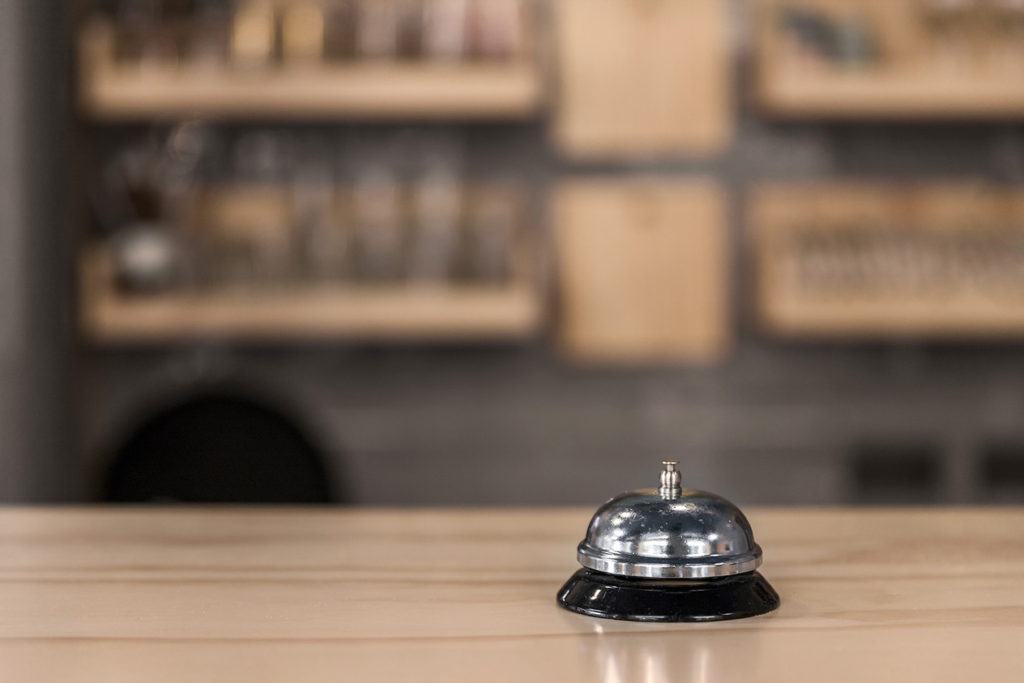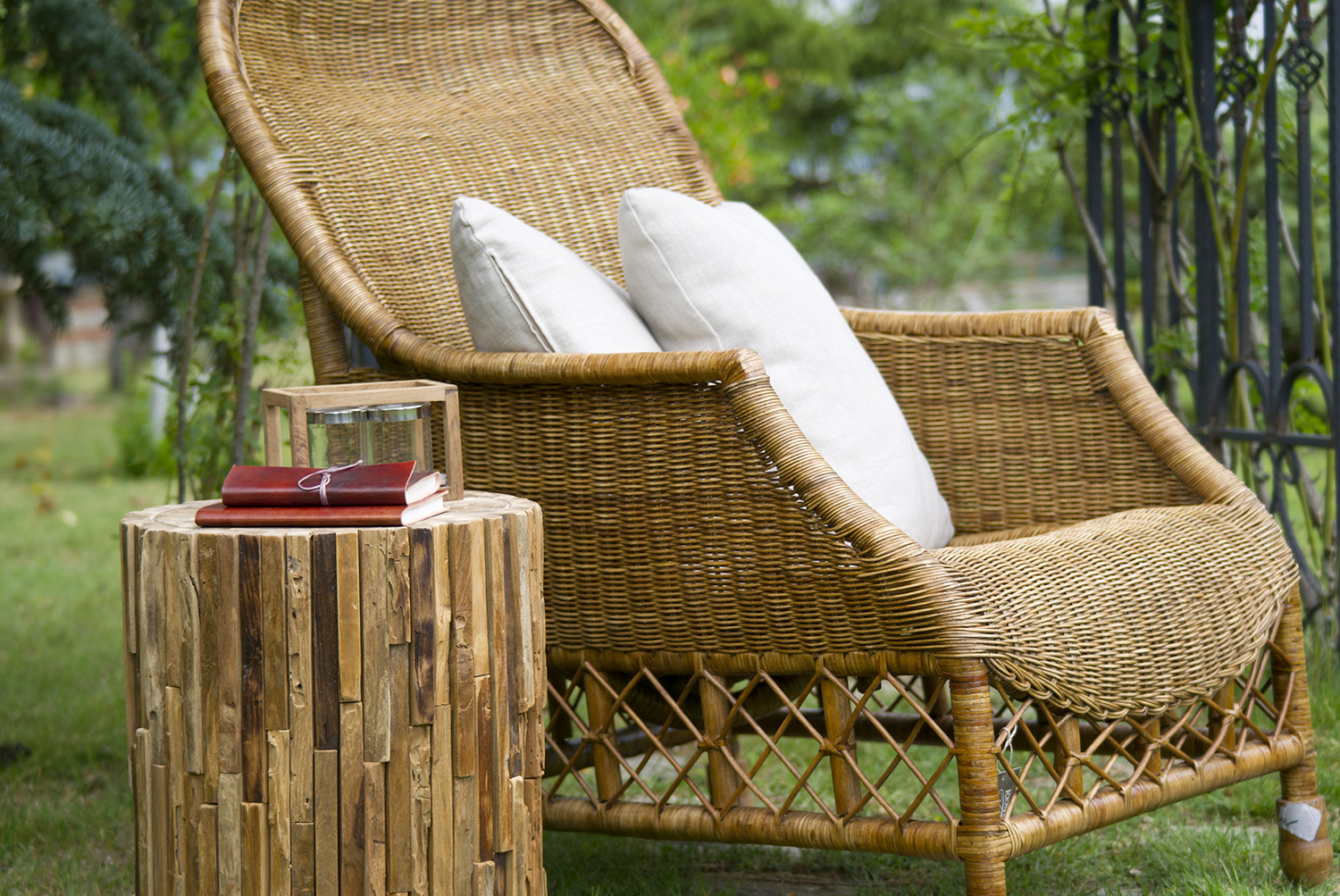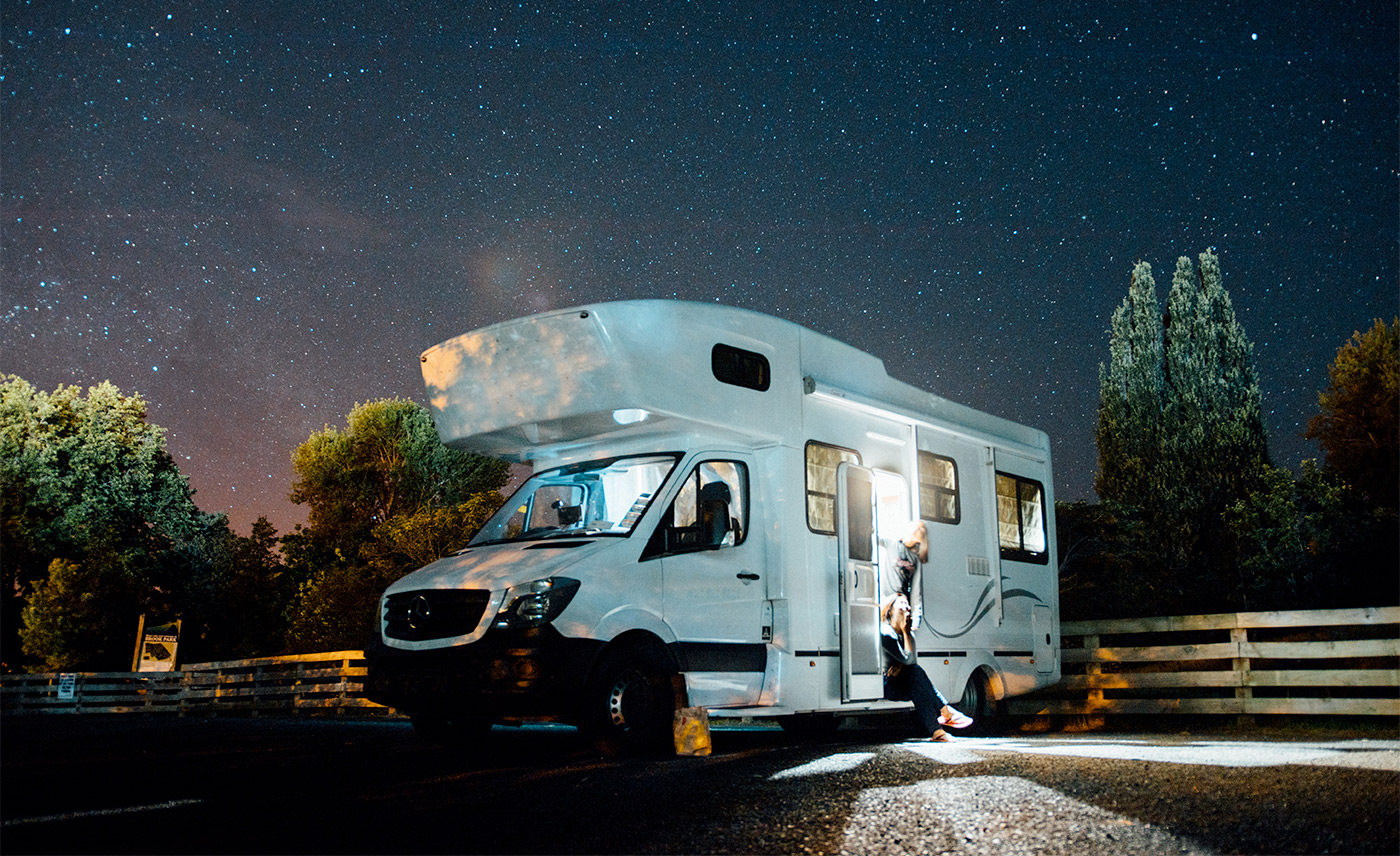No products in the cart.
EAT JESOLO FOR A “SUSTAINABLE FOOD AND WINE”
HOME > DISCOVER JESOLO > FOOD AND WINE > EAT JESOLO FOR A “SUSTAINABLE FOOD AND WINE”
Maximum respect for the customer, for raw materials and for the agri-food chain, love for one’s territory.
These are the reasons that have led some of the most prestigious restaurants in Jesolo, after years dedicated to the search for flavor and technique, to join together and give value to diversity, individuality, in a word, “people”.
This is the dream of a new “gastronomic humanism” that led these restaurateurs, with the support of Confcommercio di San Donà – Jesolo, to set up EAT JESOLO, a Product Club recognized by the Veneto Region. This association brought together restaurateurs, agri-food producers, food artisans and hospitality operators in a project for “sustainable food and wine”.
The proposed menus are based on three factors:
1) the use of local products that respect seasonality (foods that the chef can find at the market on a specific day);
2) dishes inspired by the traditional cuisine of local fishermen and farmers, not to replicate the past, but using creativity to look forward to;
3) culinary preparations that restore the sense and taste of the place and emotionally involve the guest, including the history of dish itself, as well as details and ingredients about its preparation, showing that products and ingredients are part of a local style of life. The aim is to meet new consumption behaviors (increasingly transversal to all generations) which promote the sustainability of food production, as a closer relationship between territory and its products, in terms of quality and uniqueness, as “food is the landscape on the plate”.
All in environments where the “safety” for the guest’s health is guaranteed with conviction for the protection of everyone’s health. To enter the world longed for by EAT JESOLO, just click to photograph the QrCodes with your smartphone and discover what is inside the plate, where to find food and products you want and also enter the world of the supply chain productive to know the origin and quality of the raw materials used.
This way, the territory becomes a menu’s integral part, with restaurateurs and artisans of EAT JESOLO which tell the stories of their dishes and products (of nature, producers, their families, the work and efforts of many people in the exceptional Venetian food and wine chain), as real “Territory Ambassadors”.
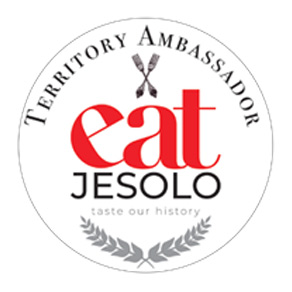
HOTEL IMPERIA




Via Bafile, 538 – Tel. 0421 370718

FIRST COURSE
HOME-MADE MALTAGLIATI WITH FRESH PEAS AND MATCHES OF OUR CUTTLEFISH
(Basic ingredients: ground wheat flour, raw peas, fresh cuttlefish, Garda EVO oil, salt and pepper)
The best time to enjoy fresh peas (historic important ingredients in Venetian cuisine) begins in Spring. In our lagoon, cuttlefish fishing takes place twice a year: in the periods March-May and July-September. It is in fact in these periods that the cuttlefish, coming from the Adriatic Sea, punctually enters the lagoon waters every year in large numbers in search of shallow waters where they can reproduce easily and lay their eggs. This cephalopod, especially inserted in a simple dish like the one proposed, is not only pleasant to the taste but also a precious ally of the body. Thanks to the presence of vitamin D, calcium and phosphorus, cuttlefish is very useful for the health of bones and teeth but is also a great support to memory and concentration for the anti-stress action strengthened by vitamins B1 and B12; due to the presence of vitamin A it also has beneficial effects on sight, while the good potassium content makes it a good ally of the cardiovascular system.
Cuttlefish contains many proteins of high biological value and very few sugars and fats and also for this reason it is a food that lends itself well to representing Spring both in terms of flavors (light and “captured” beautifully by homemade maltagliati) and as benefits on our physicist in search of psychophysical regeneration after the winter.

FIRST COURSE
BUCKWHEAT SACCOTTINO WITH SHRIMPS AND ASPARAGUS OF CIMADOLMO TOWN ON A BED OF ASIAGO MEZZANO DOP CHEESE
(Basic ingredients: buckwheat flour, raw asparagus, Adriatic prawns, Asiago DOP cheese, salt and pepper)
Asparagus originates from Mesopotamia, the “fertile crescent” between the Tigris and Euphrates rivers, where it grew as a spontaneous plant; it was known at the time of the Egyptians who spread it throughout the Mediterranean basin. The etymology of the term also leads us back roughly along the same path. The most recent reference is to the Greek aspáragòs, in turn from the verb spargao which means “to be turgid”, an aspect that in ancient times led to the belief that the shoot had aphrodisiac properties. Asparagus finds its natural habitat throughout the North East but especially in Veneto, along the course of various rivers in the provinces of Verona, Vicenza, Padua, Treviso and Venice, where it has obtained prestigious acknowledgments of origin (one PDO and two PGI ) and traditionality. It is well known that the asparagus of our countryside has fueled history and legend, art and fantasies around the kitchen for centuries. The one in Cimadolmo (TV) is one of the two I.G.P. of Veneto, tender and sweet that delights the most demanding palates and it is a consolidated custom to combine it at Easter with hard-boiled eggs. The chef’s imagination combines the precious vegetable with another great product of our parts, that shrimp that is fished in the lagoon rich in Omega 3 and Omega 6 (good fats), in mineral salts (which are so good for our skeletal structure and low-calorie, inserting it in the buckwheat bag that reminds us of ancient homemade flavors almost lost. All lying on a bed of a prestigious cheese from our mountains with rare flavors also due to the herbaceous feeding of the cattle. The dish is gluten free, thanks to preparation processes that respect the regulations of the Italian Celiac Association.

SECOND
OUR FRIED FISH WITH SEASONAL VEGETABLES IN CRUNCHY RICE FLOUR
(Basic ingredients: fresh squid, prawns and prawns from the Adriatic, peppers, aubergines, courgettes, carrots, onions and rice flour and salt)
Fried fish – in today’s version – has a “young” history compared to other specialties. Because if it is true that in popular and street cuisine, anchovies, small fish or squid were already present in the Middle Ages, the dish took on its dignity – in bourgeois homes – only in the mid-19th century when the “alla Russian ”instead of the“ French ”one. The fried fish was obviously damaged in the second case, which included all the dishes served together at the table, while in the first it arrived very hot on the serving tray and immediately divided by the waiters between the individual diners. It is not a detail that the frying should be eaten immediately, also to taste the characteristic ripple that comes from the pieces of batter thrown into the pot. And maybe, especially in company, even with your hands … because frying is a “social” dish. Our proposal is inspired by Japanese tempura (only squid and shrimp with many vegetables) but with the use of fresh fish from our sea and vegetables from the splendid gardens of Cavallino, in front of Venice. We also thought of frying everything with olive oil because, thanks to its fairly high smoke point, it seems to us the healthiest solution. Of course, in Jesolo we can only use extra virgin olive oil from Lake Garda.

SECOND
OVEN-BURNED TOMATO SAUCE WITH NOSTRANA BUFFALO BURRATA ON BASIL CRUMBLE AND EXTRA VIRGIN OIL FROM GARDA
(Basic ingredients: Cavallino beef heart, Eraclea buffalo burrata, bread, basil, Garda EVO oil, salt and pepper)
Among the many products that characterize the agriculture of the Venetian coast, there is the Cavallino tomato. The production of tomatoes on the Venetian coast dates back to a few centuries ago, when it was cultivated by colonists and sharecroppers for their own consumption or for the Venetian nobility alone. It was after the flood of 1966, which caused the extinction of fruit crops and in particular the white-fleshed peach, that the tomato became the protagonist of local agriculture. Cultivation and harvesting are done manually. The product does not undergo any processing because it is marketed fresh. The Cavallino tomato is highly appreciated for its organoleptic properties deriving from the selection of the different varieties of the product and the basically saline nature of the land, which gives it completely different properties from the industrial one. The Cuore di Bue variety (whose production begins in May) was introduced more recently for commercial diversification and is highly appreciated not only in salads but also in cooking, as in the proposed dish. The buffalo burrata that enriches the tomato flavor by enhancing it, even though as it is known of non-Venetian origin, together with buffalo mozzarella in the last decades has taken on great production importance in Veneto, thanks to some far-sighted farms (from one of which located in Eraclea we supply ourselves), which with great attention to cattle feeding and production processes have been able to create an excellent and always fresh product.
Locanda al Piave




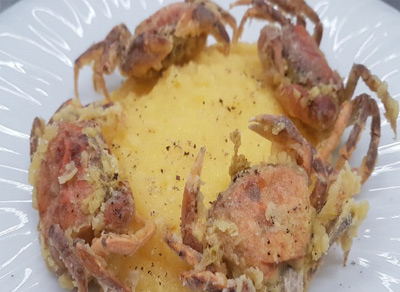
STARTER
MOECHE FATTENED INTO EGG OVER YELLOW UNREFINED CORNMEAL POLENTA
(Basic ingredients: moèche, egg, salt, polenta, water, EVO oil, salt, pepper)
The green crab (also called “common”) is the most widespread crab species in Mediterranean Basin. In the Northern lagoon of Venice is but typical of a particular activity: fishing for Moèche. Crabs are chosen by fishermen in molting phase for three centuries, when they lose their carapace and occur tender and soft – hence the name: Moèche (that is “soft” in Venetian language). It is a seasonal occupation that follows crustaceans growing rhythms and has its own peaks in Autumn and Springtime. Crabs, once captured, are submitted to an accurate selection, to divide the ones ready for the molt in a short time (from one to three weeks). Only these last are lowered into the water, in sandy shallows or in proximity of the lagoon canals, in specific crab fishing baskets, to become Moèche. The ancient recipe that we propose (with the addition of a soft yellow polenta) requires that before cooking the Moèche should be immersed alive in bowls full of beaten egg which they will absorb well. After about an hour, they will be floured and fried in boiling oil. And this is the second metamorphosis takes place. From greenish and mushy beings they turn into crunchy golden red bites, with a sweet taste associated with the taste of seaweed and sea. Unfortunately, the period to savour them is too short: Spring and Autumn.
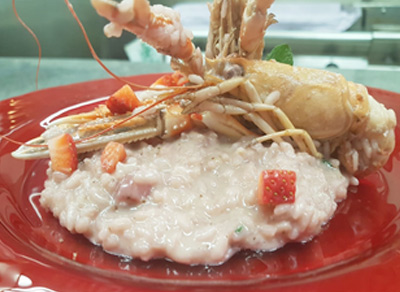
FIRST
STRAWBERRY RISOTTINO WITH SCAMPI AND PEOPLE MINT
(Basic ingredients: vegetable broth with vegetables, strawberries, scampi, peppermint, brandy, white wine, Vialone Nano rice creamed with butter, extra virgin olive oil, salt, pepper)
Rice, certainly known by the ancient Greeks and Romans (who, however, did not grow it), was originally considered a medicine to be used in infusion. Until 1400, rice was mainly sold in apothecary shops as a medicinal and exotic plant. Only after the discovery of America was food introduced into the list of “new foods” and cultivation began in Piedmont, Lombardy and Veneto to fight hunger, just like corn and potatoes.
Only after the First World War in Northern Italy was it possible to obtain the most resistant varieties to parasites with appropriate grafts of original rice, including Vialone Nano (originally from Piedmont and now IGP of Verona) which favoured the spread of new cooking techniques which led to today’s Risotto (the rice is first toasted, then wet with wine and broth and then creamed together with the characterizing ingredients). From cooking with leftovers (“throw what you have” in a rice cooked in broth), rice as “risotto” has thus become a much sought after and appreciated recipe.
In the history of Italian cuisine, strawberry risotto has experienced alternating phases. This dish was in vogue in the 1980s, when all chefs tried their hand at experimenting and proposing unconventional dishes. After those years, however, these first courses suffered a decline, only to return in vogue in these years. Furthermore, the strawberry risotto is a suitable dish for those who want to organize an elegant and sophisticated dinner for two.
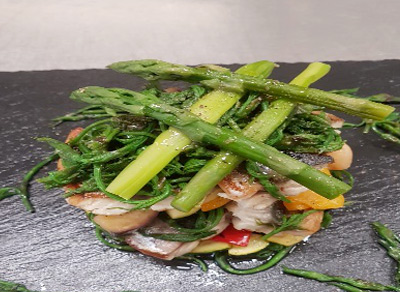
SECOND
THOUSAND LEAVES OF MACKERER
(Basic ingredients: mackerel, extra virgin olive oil, salt, pepper drained in a non-stick pan, zucchini tartare, aubergine and pepper, green asparagus, marjoram, glasswort drained with EVO oil and garlic)
Mackerel is a typical fish of the Adriatic area. On the Venetian coasts it can be easily caught in spring, when it moves in flocks from the high seas to near the coast to lay its eggs. It is in this period that its meats are richer in flavors and healthier properties. The Prince of Omega 3 gives us: a real mine of proteins and vitamins. The tasty and firm mackerel meat makes it one of the least lean fish on the fish scene; this is why when cooking it, it is advisable not to add additional fats, adding seasonal vegetables (such as the exceptional ones of the nearby Cavallino Treporti area in front of Venice) and perhaps even the mythical Venetian glasswort, an endangered species that can be found still in the Venice Lagoon, a complex and varied territory, a corner of paradise, a territory that offers unusual flavors to be discovered. Right here we still find the Venetian Salicornia, widely used in the recelas of the past and recently rediscovered by some good chefs. Similar to a wild asparagus, so much so that it deserves the name of “sea asparagus”, it becomes the protagonist in the kitchen for the property of enhancing the scent and taste of many seafood dishes

DESSERT
STRAWBERRIES
(Basic ingredients: panna cotta, milk, sugar, vanilla bar, lemon, strawberries, mint, 70% dark chocolate)
The most famous strawberry of Veneto is the one grown throughout the province of Verona, but in particular in the lower and eastern Veronese area. Its normal ripening period is from April to June, while the forest ones ripen between June and July. Their conservation is unfortunately limited, because fruits are easily attacked by mold, even if kept in the refrigerator. The strawberry was known and appreciated since ancient times; even Virgil praises them. The strawberry has been recognized by doctors, herbalists and naturalists of all time: it is also rich in vitamin C. According to documented testimonies dated 1796 and deposited in the State Archives of Verona, the strawberry was present in the city gardens Veronese even before the 17th century. Strawberry enriches our panna cotta and with 70% chocolate transforms an excellent dessert into a dish suitable for a romantic evening with your partner. Fresh strawberries, in fact, have always been considered, as well as chocolate and oysters, one of the aphrodisiac foods par excellence. In France, the aphrodisiac power of strawberries is so important that tradition has it that the couple eat them as breakfast together the day after the wedding. But in reality, especially those of Spring, they are very tasty and are very good for health.
PONTE DE FERO

Via Colombo, 1 – Tel. 0421.350785

FIRST
SPAGHETTI WITH CALAMARI, SPONTANEOUS HERBS AND CONFIT TOMATOES
(Basic ingredients: EVO oil, squid, white wine, tomatoes, field herbs)
A great classic of seafood cuisine to be enjoyed in the first part of Spring because as the sea temperature rises, the Calamari will gradually sink and finding them will be increasingly difficult, while nature on mainland begins to awaken and the Venetian meadows will give delicious and nutritious wild herbs that can be used in the kitchen. A real gift already used by the ancient Romans that never lacked them in their dishes. Our good fortune is to have a very generous lagoon nearby which in its islets favored the spontaneous and then man-led development of a great variety of herbs which in spring reach the highest levels of quality and variety.
RISTORANTE DA OMAR


Via Dante Alighieri, 21 – TEL.0421 93685
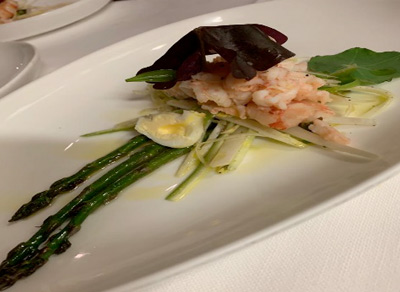
STARTER
RAW WHITE ASPARAGUS, BITTER GREEN ASPARAGUS MONTINE COOKED WITH CRUSTACEANS, EGGS AND MUSTARD SAUCE WITH YOGURT
(Basic ingredients: white Cimadolmo asparagus, cooked Montine bitter asparagus, steamed quail egg, mustard and yogurt sauce, oil, salt, pepper to taste)
A classic (white asparagus) and an authentic rarity of our territory (the green Montine asparagus found in the North Lagoon of Venice) together with canoce (or sea cicadas, which can be found throughout the year but begins in March the best time to savour them), a triumph of spring on the table. It is well known that the asparagus of our countryside has fueled history and legend, art and fantasies around the kitchen for centuries. The one in Cimadolmo (TV) is one of the two I.G.P. of Veneto, tender and sweet that delights the most demanding palates and it is a consolidated custom to combine it with hard-boiled eggs at Easter. Asparagus originates from Mesopotamia, the “fertile crescent” between the Tigris and Euphrates rivers, where it grew as a spontaneous plant; it was known at the time of the Egyptians who spread it throughout the Mediterranean basin. The etymology of the term also leads us back to the same path. The most recent reference is to the Greek aspáragòs, in turn from the verb spargao which means “to be turgid”, an aspect that in ancient times led to belief that it should had aphrodisiac properties. Asparagus finds its natural habitat throughout the North East but especially in Veneto, along the course of various rivers in the provinces of Verona, Vicenza, Padua, Treviso and Venice, where it has obtained prestigious acknowledgments of origin (one PDO and two PGI) and as traditional product. The Montine variety is perhaps the one that comes closest to the varieties present in Roman times: it was selected from the wild maritime species that still grows in the coasts of the Adriatic and which certainly can correspond to the asparagus much praised by Pliny. Finally, the hard-boiled quail eggs used, similar in flavor to those of hens, are lighter, more delicate and with less cholesterol and for this reason they are a part of dish providing proteins but without weighing down their taste and digestibility.

STARTER
WILD ASPARAGUS, MUGGINE CARPACCIO, AROMATIC HERBS
(Basic ingredients: raw wild asparagus, raw mullet carpaccio and spring aromatic herbs, oil, salt and pepper to taste)
Wild asparagus, mullet, aromatic herbs: a triumph of the Venetian spring, a stimulating combination of land and sea for our palate, a symphony of fresh spring flavors.
The spring season coincides with the awakening of nature, the lengthening of the days, the desire to be outdoors. It’s also wild asparagus season, one of its most representative gastronomic symbols. In fact, times change, but the harvest of wild asparagus, a tradition that links poor cuisine with nature contact, does not seem to lose its charm for the many enthusiasts who dedicate themselves to this activity walking on the edge of the woods and through the Venetian countryside. Qualitative scientific comparisons with other species have shown that wild asparagus has higher levels of vitamin C, higher antioxidant activity thanks to the greater presence of total phenols. Two “serious limitations”, however: harvesting period exclusively in spring (everything ends in May) and species in danger of extinction, unfortunately. Mullet (or Volpina) is the most valuable type of mullet, very common in the Venetian sea. It has firm and thick meat with a “generous” taste. Wild mullet fishing period begins in spring and it is precisely in this period that its meats have the best taste to the palate. The precious bottarga (“mullet” in fact) is obtained from the ovaries of this fish species.
TERRAZZA SORRISO




Via Andrea Bafile 10° Accesso al Mare, 13 – tel. 392 289 1575
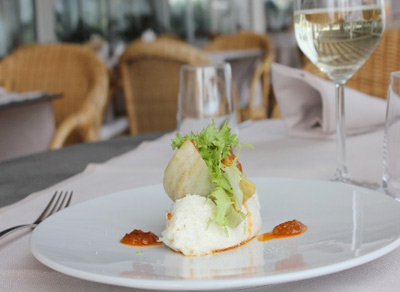
STARTER
BACCALA ‘MANTECATO, VIOLET ARTICHOKE HEARTS OF SANT’ ERASMO, CONFIT TOMATOES WITH ALMONDS
(Basic ingredients: cod cooked in water and milk, creamed with salt, pepper, seed oil and cooking water, heart of Sant’Erasmo violet artichoke)
Baccalà (or rather Bacalà with only one c according to the Venetians) is, as we know, stockfish (cod caught, first dried in the cold air and in the sun until it becomes hard as a stick, from which it is stokvish, and then beaten to fray it before cooking it and being able to eat it) made known to the Venetians by the captain and shipowner Pietro Querini in the mid-1400s, slowly became from poor food to gourment delicacy served in the best Italian restaurants and at the center of the dishes of the best chefs. Today three variants of Bacalà are widespread in Venetian cuisine: alla veneta (stewed with tomato paste and onion), alla vicentina (with fried onion and salted sardines) and Creamed (only stockfish and herbs). This Venetian delicacy is offered on a heart base of Artichoke from Sant’Erasmo, an island in the Venice lagoon, half an hour by vaporetto from the Fondamenta Nuove. On clayey soils, well drained and with a very high salinity, tasty vegetables grow, especially artichokes. Tender, fleshy, thorny and elongated in shape, the Sant’Erasmo artichoke has dark violet bracts. The artichoke season in Venice begins at the end of April with the harvest of the castraùre, the first small apical shoot of artichoke, very tender, which is cut to allow the more luxuriant growth of the other shoots. Articiochi, as the artichokes are called in Venice, were introduced into Venetian cuisine by the Jewish community. A delicate touch of ancient “exoticism” is added to the two excellent traditional products of the area with the confit tomato (confit cooking – or also known as cooking oil – is an ancient food preservation technique that has its origins in the South west of France in the Middle Ages) make the dish a delicate contamination between different but excellent gastronomic cultures, evoking the cosmopolitan and open spirit of the great Serenissima.
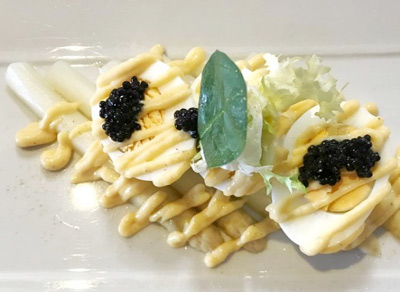
STARTER
CAVALLINO WHITE ASPARAGUS, EGGS, BARZOTTA SAUCE AND CAVIAR
(Basic ingredients: Cavallino white asparagus, eggs, barzotta sauce: eggs, salt, pepper, oil, lemon, Worcestershire sauce and caviar)
It is well known that the asparagus of our countryside has fueled history and legend, art and fantasies around the kitchen for centuries. Asparagus originates from Mesopotamia, the “fertile crescent” between the Tigris and Euphrates rivers, where it grew as a spontaneous plant; it was known at the time of the Egyptians who spread it throughout the Mediterranean basin. The etymology of the term also leads us back roughly along the same path. The most recent reference is to the Greek aspáragòs, in turn from the verb spargao which means “to be turgid”, an aspect that in ancient times led to the belief that the shoot had aphrodisiac properties. Asparagus finds its natural habitat throughout the North East but especially in Veneto, along the course of various rivers in the provinces of Verona, Vicenza, Padua, Treviso and Venice, where it has obtained prestigious acknowledgments of origin (one PDO and two PGI) and traditionality. In this dish the delicious turione is proposed as in the Easter tradition with egg, but not hard but barzotto (or “basoto” in Veneto) that is, with the red heart still a little soft, immersed in a delicious sauce; all embellished with the increasingly rare caviar that has fortunately been produced for over forty years also in the Treviso area. An appetizer, therefore, for fine palates, to be accompanied absolutely with classic method bubbles of which Veneto is very rich.
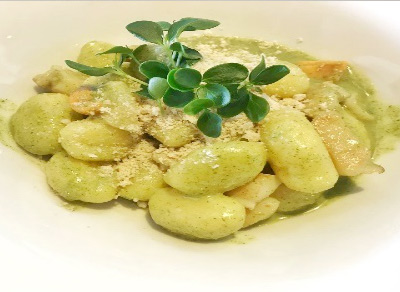
FIRST
GNOCCHETTI OF POTATOES, SCALLOPS, FIELD HERBS AND ALMONDS
(Basic ingredients: Potato gnocchi, Caorle scallops, herb pesto, bruscandoli from Cavallino, salt, oil, parmesan and chopped almonds)
Homemade potato gnocchi immersed in the spring of the Venice lagoon where in this season the Scallops and wild herbs of Cavallino Treporti take on unforgettable flavors and aromas.
The Scallop, a highly prized bivalve mollusk that the great Botticcelli made to become the emblem of Venus in one of his famous paintings, also called the shell of San Giacomo, is venerated by pilgrims on their way to San Giacomo di Compostela from which it was used to drink water from rivers during the approach to the famous sanctuary in the Iberian Peninsula. The shell of St. James had to be sewn onto the mantle or hat and was an indication or symbol to show to everyone that the pilgrim had reached and visited the tomb of St. James in the very distant and green region of Galicia.

SECOND
TUNA FISH BURGER, SAFFRON BREAD AND FRESH ASIAGO CHEESE
A modern dish that recalls a young cuisine and style and that combines a noble fish with an equally noble cheese such as Asiago Fresco DOP (2 months of aging) with a young taste and a milky flavor and is embellished with a real rarity from Jesolo: saffron bread. This type of bread is kneaded with natural yeast pomace flour, pure MP sourdough, which makes it very digestible, keeping it fresh for a long time, while free of additives and preservatives, with product characteristics and textures that respect for times of a long leavening.
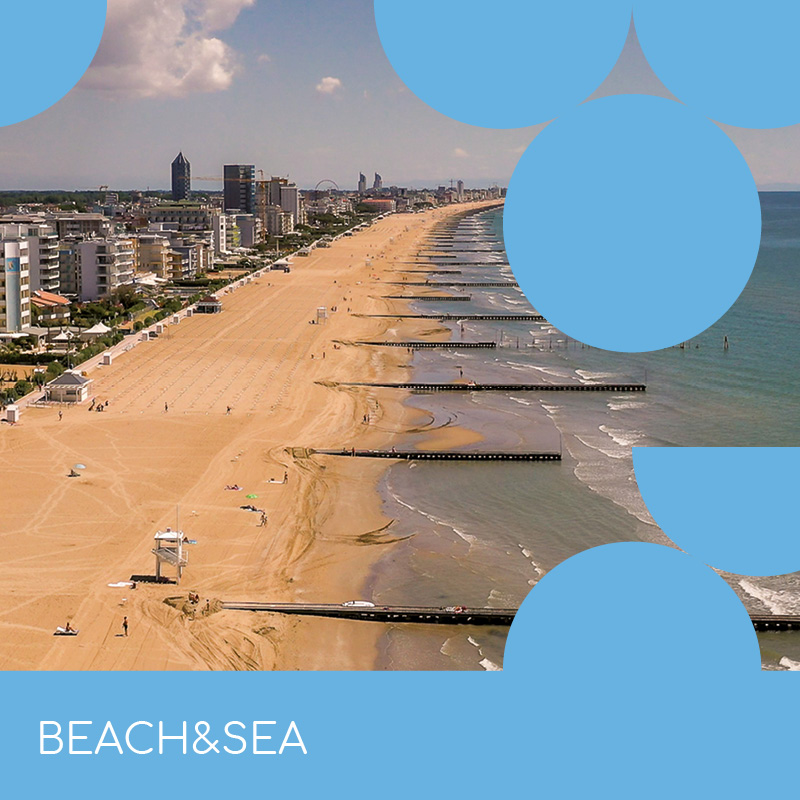
With your family, partner or friends, the beach of Jesolo will welcome you!
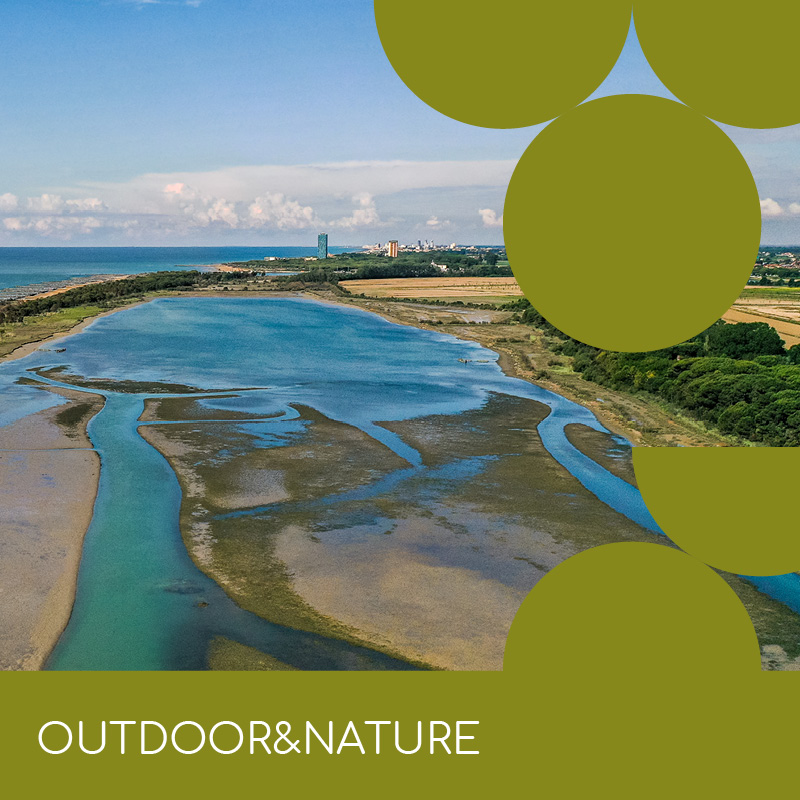
An unparalled landscape made of water and land, to explore by walk or bike.

At any time and for every ages, the City Beach offers you a world of fun and opportunities.
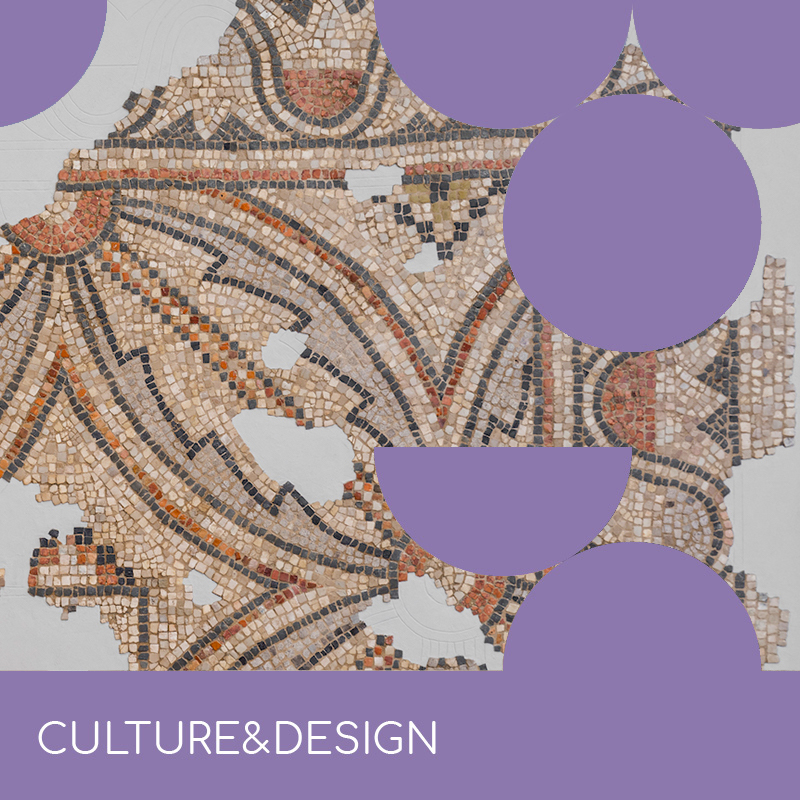
History and culture, architecture and design, blend together between the sea and the lagoon.

The meeting between lagoon, sea, land and rivers makes a unique and amazing cooking.

Walk around the city and discover the sparkling shop windows of the longest shopping street of Europe.

Organise your dream wedding!

Dynamism, energy, strenght: here’s the city of sports and events.








